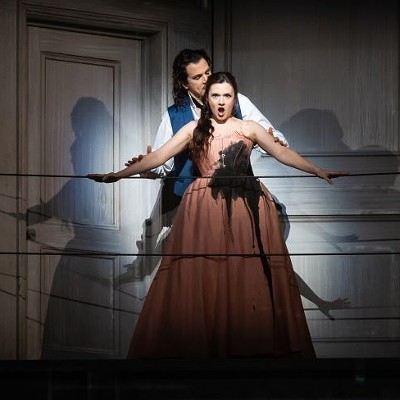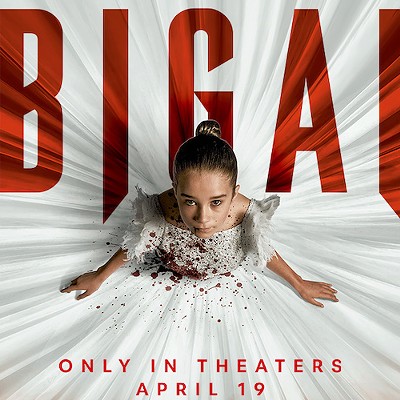This year at the Texas Renaissance Festival, listen for the sound of blaring trumpets and beating drums: It signals the start of a show of the Middle Ages' premiere sport.
Four times a day, knights ride out in the RenFest Arena to greet the roaring crowd, as flags wave and music blasts. They present themselves to their sides of the arena – the arena is divided into four sections, one for each knight – to ask the audience to support them through cheering. The crowd screams in anticipation. Then, after the knights present themselves to the festival's king and queen, they ready themselves for the big moment.
The knights take off, charging at each other with their ten-foot-long lances poised to knock their opponents off their horses. This is the joust, the biggest show of the entire Texas RenFest, which opens this weekend on October 8.
“The arena seats about 5,000 people and on a busy day most of those shows will be full,” said Travis Bryant, director of marketing, public relations and group sales for the RenFest. He added, “It's just because it's the most quintessentially, you know, Renaissance experience…to see jousting knights on stage. When you think about that period of time, that's one of the first things that probably comes to mind.”
“It's a medieval rock show,” agreed James Fortner, a performer who works as a jousting knight at the RenFest. (His character's name is Don Rodrigo the Duke of Santiago, “the evil Spanish knight.”) Fortner is employed by the Hanlon-Lees Action Theater, the private company that the RenFest contracts its jousting act out to.
You might remember the reality TV show Knights of Mayhem, where football player-sized knights wearing hundreds of pounds of armor crashed into each other in what's known as “competitive jousting.” That's not what the Hanlon-Lees Action Theater does.
Instead, they perform “theatrical jousting,” which is basically exactly what it sounds like: While the jousting is real – the knights gallop towards one another and hit each other, hard enough to soimetimes shatter lances – the drama is staged. The knights' falls from their horses, as well as the their frequent demands for a sword fight or a “joust to the death,” are all choreographed. (Sorry to break the illusion, but no one actually dies during the RenFest joust.) And like at any play, the knights follow a script.
But just because it has the word “theatrical” in the name doesn't make the jousting any less difficult. Performers must be able to ride horses in armor, to sword fight, to perform stunts, to memorize choreography, to act. The show might involve hooking rings on lances, slicing vegetables in half with swords or any number of specialized skills. “I think it's harder than most competitive jousting just because there's so much to remember,” Fortner said.
Plus, unlike in competitive jousting – where knights aim to hit their opponents' shields in a certain way, not to necessarily unhorse them – the Hanlon-Lees performers must fall off their horses all the time because it makes for a better show. “We're doing four saddle falls a day, eight a weekend for us,” explained Fortner, who now also works as a civic engineer for the Air Force. He added, “So we're falling off constantly, at 35 miles an hour, all weekend long, for people's entertainment.”
Fortner got into the business more than two decades ago when at just 15 he met the Hanlon-Lees Action Theater founders and owners Kent Shelton and Taso Stavrakis. Fortner's mom had a booth at a Renaissance fair in Massachusetts, and he had to go with her on the weekend. Initially, he hated it. But Fortner had worked with horses all his life, so when he spotted the knights on horseback at the fair, his mom encouraged him to get a job with them. So Fortner got hired as a squire – squires help out knights, like the pit crew of the jousting world – and started jousting himself a few years later.
Fortner considers himself very lucky to have learned theatrical jousting from the performers at the Hanlon-Lees Action Theater. “Kent was one of the first ever in the United States to ever do this,” he said, comparing Shelton and Stavrakis to the Obi-Wan Kenobis of choreographed jousting.
Shelton said he got his start in Renaissance fairs in the '70s, when he spotted a group of people sword fighting and juggling in Central Park as part of an advertisement for the New York Renaissance Faire. Shelton had trained as an actor, so he knew how to do circus and acrobatic tricks, and he and a few friends ended up getting hired by the Faire.
“They asked us if we could do a joust. We said yes, having never done one before, in 1979,” Shelton laughed, “and we've been doing it since.” Shelton asked Stavrakis – who he'd met through doing a show in New York – if he wanted to join, and the two have now performed theatrical jousts for more than 30 years. (Though the Hanlon-Lees Action Theater's performances aren't limited to just the Middle Ages. For example, Shelton acts as Buffalo Bill at Wild West shows.)
“Originally, it was neat because we were the only ones doing it,” Stavrakis said of theatrical jousting. More companies have since formed, many of them by people who had once been a part of the Hanlon-Lees Action Theater. He added, “We just kept going, even after we realized that it's not really cost-effective. It's very difficult to make money because the show itself costs so much.”
Including traveling for shows and actually performing the joust, performers in the Hanlon-Lees Action Theater spends about six months of the year working for Renaissance festivals, Stravrakis estimated. Aside from the expense of specialized equipment like armor and swords, the horses must be looked after. Then there's the cost of the injuries.
Once, while getting hit off his horse, Fortner got hung up in his stirrups and ended up hitting the ground face-first. He dislocated one of his vertebrae – specifically, the very important one that lets you turn your head from side to side. He sat out three months' worth of jousting, though his doctor told him to take more than six. “You gotta pay the bills, so you gotta keep working,” Fortner said, adding that the knights break fingers, ribs, “you name it.” (It could have been worse. According to The New York Times, when a lance went a bit south at a Michigan Renaissance fair joust, Australian jouster Rod Walker ended up with a partially severed penis.)
“Our show is fast and violent, but it's scripted. And 90 percent of the time, nobody gets hurt,” Stavrakis explained. “You still get bumps and bruises, but we try to keep the real injuries down to a minimum. And we have, over 30 years.”
Two decades in, Fortner said he still loves the joust. It's the thrill of the crowd that keeps him going, the many eyes of kids who watch and adore him – to them, he's a fairy tale come true, a medieval knight come to life.
“Jimi Hendrix or somebody must've felt the same way when he played at Woodstock,” Fortner said. He added, “Especially when you ride out and they're chanting your name, you've got 8,000 people screaming for you. There's nothing like it. It gives you chills.”
The Texas Renaissance Festival opens October 8, and is open every weekend until November 25. The Hanlon-Lees Action Theater performs the joust four times each day at the RenFest arena.
Support Us
Houston's independent source of
local news and culture
account
- Welcome,
Insider - Login
- My Account
- My Newsletters
- Contribute
- Contact Us
- Sign out
Meet the Texas RenFest Performers Who Bring the Joust Into the 21st Century
Carter Sherman October 4, 2016 6:00AM
[
{
"name": "Related Stories / Support Us Combo",
"component": "11591218",
"insertPoint": "4",
"requiredCountToDisplay": "4"
},{
"name": "Air - Billboard - Inline Content",
"component": "11591214",
"insertPoint": "2/3",
"requiredCountToDisplay": "7"
},{
"name": "R1 - Beta - Mobile Only",
"component": "12287027",
"insertPoint": "8",
"requiredCountToDisplay": "8"
},{
"name": "Air - MediumRectangle - Inline Content - Mobile Display Size 2",
"component": "11591215",
"insertPoint": "12",
"requiredCountToDisplay": "12"
},{
"name": "Air - MediumRectangle - Inline Content - Mobile Display Size 2",
"component": "11591215",
"insertPoint": "4th",
"startingPoint": "16",
"requiredCountToDisplay": "12"
}
,{
"name": "RevContent - In Article",
"component": "12527128",
"insertPoint": "3/5",
"requiredCountToDisplay": "5"
}
]
KEEP THE HOUSTON PRESS FREE...
Since we started the Houston Press, it has been defined as the free, independent voice of Houston, and we'd like to keep it that way. With local media under siege, it's more important than ever for us to rally support behind funding our local journalism. You can help by participating in our "I Support" program, allowing us to keep offering readers access to our incisive coverage of local news, food and culture with no paywalls.
Carter is the Houston Press fellow. A Seattle native, she graduated from Northwestern University and also has written for Elle, Los Angeles magazine and Ms. Magazine.
Contact:
Carter Sherman
Follow:
Twitter:
@carter_sherman
Trending Arts & Culture
- Love is in the Alley's Charming Production of Brontë Classic Jane Eyre
- Whose Story is It in The Father at 4th Wall Theatre Co.
- Fallout Successfully Makes the Transition From Video Game to Streaming Show
-
Sponsored Content From: [%sponsoredBy%]
[%title%]

Don't Miss Out
SIGN UP for the latest
arts & culture
news, free stuff and more!
Become a member to support the independent voice of Houston
and help keep the future of the Houston Press FREE
Use of this website constitutes acceptance of our
terms of use,
our cookies policy, and our
privacy policy
The Houston Press may earn a portion of sales from products & services purchased through links on our site from our
affiliate partners.
©2024
Houston Press, LP. All rights reserved.





